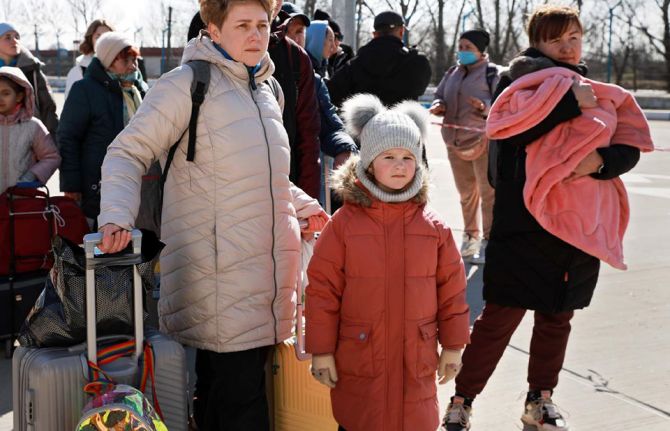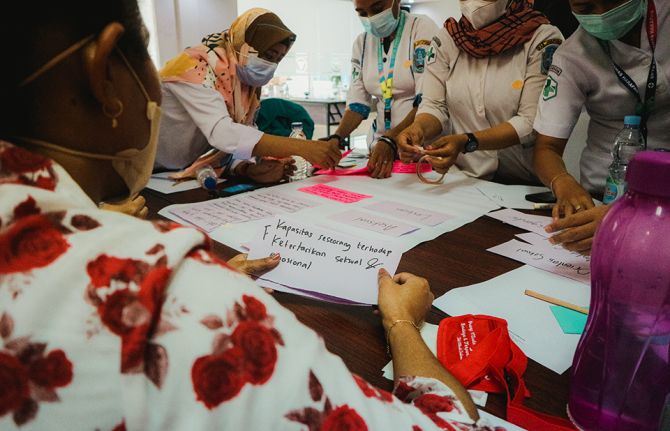
Feature Story
UNAIDS satellite explores paving the way towards virtual elimination of mother-to-child transmission of HIV
20 juillet 2010
20 juillet 2010 20 juillet 2010
From left: Ambassador Eric Goosby, United States Global AIDS Coordinator; Professor Michel D. Kazatchkine; Executive Director, The Global Fund to Fight AIDS, TB and Malaria; Anthony Lake, Executive Director of UNICEF; Michel Sidibé, Executive Director of UNAIDS; Hiroki Nakatami, Assistant Director General of WHO; at the UNAIDS PMTCT Satellite at the 18th International AIDS Conference in Vienna, Austria on 19 July 2010. Credit: UNAIDS/Heimo Aga
UNAIDS hosted a satellite at AIDS 2010 on preventing mother-to-child transmission of HIV 19 July. It was co-chaired by Antony Lake, Executive Director of UNICEF and Hiroki Nakatani, Assistant Director General of World Health Organization (WHO) and coordinated by Gottfried Hirnschall, Director of the HIV department (WHO). Opening remarks were delivered by Michel Sidibé, Executive Director of UNAIDS and Michel Kazatchkine, Executive Director of the Global Fund to Fight AIDS, TB and Malaria, and Ambassador Eric Goosby, United States Global AIDS Coordinator.
The call to eliminate mother-to-child transmission of HIV was first made by UNAIDS Executive Director Michel Sidibé and he has since been joined by leaders of nations, heads of multilateral, bilateral, regional and national bodies, presidents of foundations, members of civil society, and even captains of football teams in the FIFA 2010 World Cup.

From left: Professor Michel D. Kazatchkine; Executive Director, The Global Fund to Fight AIDS, TB and Malaria; Anthony Lake, Executive Director of UNICEF; Michel Sidibé, Executive Director of UNAIDS; Hiroki Nakatami, Assistant Director General of WHO; at the UNAIDS PMTCT Satellite at the 18th International AIDS Conference in Vienna, Austria on 19 July 2010. Credit: UNAIDS/Heimo Aga
Addressing the satellite, Mr Sidibé noted that many African countries like Botswana, Namibia and Swaziland are already leading the way towards virtual elimination if mother-to-child transmission, and many others are close behind.
This groundswell of support is lending hope to the possibility that transmission of HIV from mothers to children can be virtually eliminated in the highest-burden countries by 2015. At the same time, the WHO has issued new recommendations on the use of antiretroviral drugs for treating pregnant women and preventing HIV infection in infants and HIV and infant feeding. The main purpose of the new recommendations is to improve maternal and child survival by drastically reducing risk to around 5%, including in breastfeeding populations.
WHO, UNICEF, UNFPA and UNAIDS have developed a PMTCT strategic vision through the UNAIDS Outcome Framework for 2009-2011, aiming at defining joint commitment to support scale up of PMTCT of HIV services and integration with maternal, newborn and child and reproductive health services.
A long way to go
Despite this momentum, many nations have a long way to go. The majority of pregnant women in low- and middle-income countries do not know their HIV status. This knowledge has risen from 7% in 2004 to 21% in 2008. Also, the majority of HIV-positive pregnant women who need antiretrovirals (ARVs) for preventing transmission of the virus to their child. Only 45% of women in need of ARVs received it in 2008, although this is up from 10% in 2004.

UNAIDS PMTCT Satellite at the 18th International AIDS Conference in Vienna, Austria on 19 July 2010. Credit: UNAIDS/Heimo Aga
The quadrupling of the proportion of women receiving this important service is good news. But children continue to be left behind. Around 32% of infants born to HIV-positive mothers received antiretroviral for PMTCT in 2008, up from 20% in 2007 and 6% in 2004.
Update
Yesterday’s satellite provided an update on global commitments to virtual eliminate mother-to-child transmission of HIV. Participants highlighted key policy and operational considerations in implementing comprehensive PMTCT services integrated with maternal health and family planning services, including the WHO 2009 guidelines on ARV drugs for treating pregnant women and preventing HIV infection in infants which were reviewed by Nathan Shaffer of WHO.
To put theory into perspective country experience was shared by Mpolai Moteetee, the PMTCT focal point in Lesotho's Ministry of Health and Social Welfare Family Health Division who spoke of the experience of rapid scale-up of PMTCT services in Lesotho.
Marie Deschamps of GHESKIO (Groupe Haïtien d’Étude du Sarcome de Kaposi et des Infectieuses Opportunistes) presented on the importance of integration of broad range of services of maternal health, family planning, PMTCT, and HIV treatment for maternal and child survival
Lilian Mworeko of ICW (International Community of Women with HIV/AIDS) Uganda shared her personal perspective as an activist and a person living with HIV.
Mother-Baby Pack
UNICEF, in collaboration with WHO and global partners, has developed an innovative simple, user-friendly and affordable packaging mechanism to deliver PMTCT preventive medications, the Mother-Baby Pack (MBP). Chewe Luo, a UNICEF Senior Advisor, presented the Pack which contains medicines for prophylaxis, ARVs and Co-trimoxazole, for the mother and for the infant in line with WHO 2010 PMTCT Guidelines. It also intends to help streamline procurement and supply management of PMTCT medicines.
The Global Fund has also declared preventing mother-to-child transmission (PMTCT) a priority and is currently assessing the possibility of reprogramming existing grants to accelerate scale-up in 20 countries (Angola, Botswana, Burundi, Cameroon, Côte d'Ivoire, the Democratic Republic of Congo, Ethiopia, Ghana, Kenya, Lesotho, Mozambique, Malawi, Namibia, Nigeria, South Africa, Swaziland, Tanzania, Uganda, Zambia and Zimbabwe).
Caroline Ryan of PEPFAR shared how their efforts will contribute towards virtual eiliminaiton. PEPFAR II has aligned its target to the UNGASS targets aiming to provide PMTCT services to 80% of all pregnant women living with HIV and exposed infants in their country programmes. All these commitments fall within the context of integrated programming for improved maternal and child health and survival coordinated with current US Global Health Initiative.
Closing remarks at the session were delivered by Antony Lake and Hiroki Nakatani.
Right Hand Content
Publications:
UNAIDS Outlook Report 2010 (pdf, 6 Mb)
UNAIDS Outcome Framework 2009-2011 (pdf, 388 Kb)





